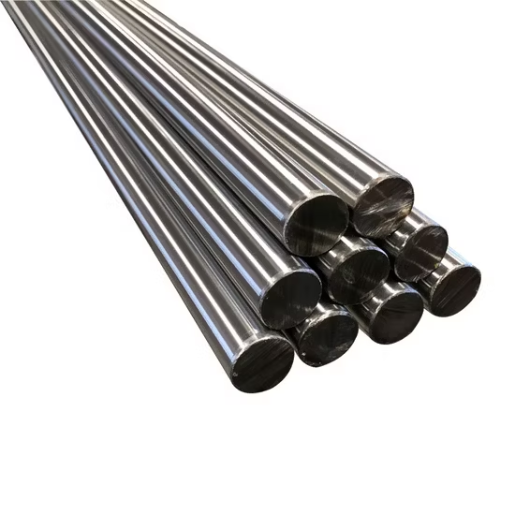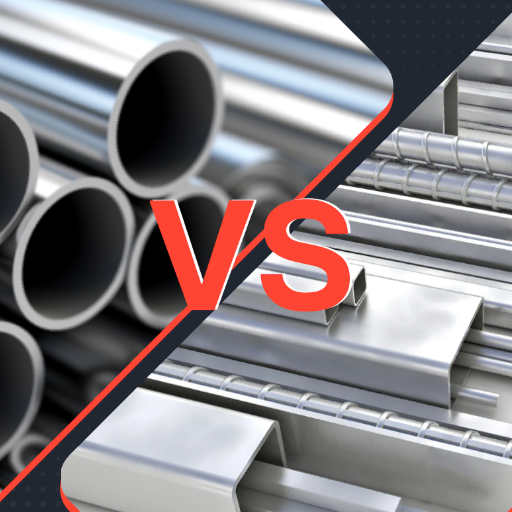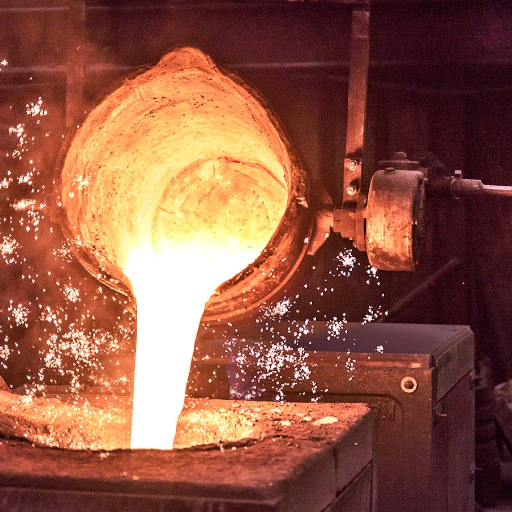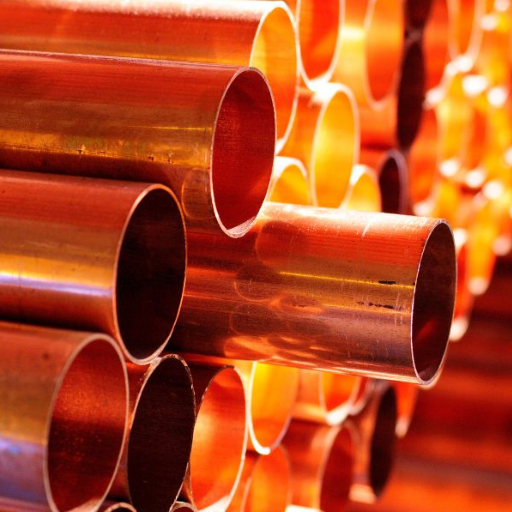The temperature and the melting point of a pure copper specimen is one of its useful physical properties which is exploited in several industries right from voltage cable manufacturing to sophisticated technological development industries. This precisely defines specific characteristics of a copper’s component not only lays heavy to metallurgists or material engineers but is equally essential for people dealing with processes like casting, welding, or any other type of thermal treatment. In this article, we will delve into a detailed post copper’s melting point, and its scope reason, factors affecting it like degree of purity environmental conditions and certain socioeconomic aspects, along with it’s implications in industrial procedures. Readers digesting the copper’s melt point analysis will understand the need of why the temperature at which copper changes state has severe significance on modifying it’s performance and usage in a wide range of operations under different conditions.
What is the exact melting point of pure copper?

The value is 1,084.62 degrees Celsius (or 1,984.32 degrees Fahrenheit) for pure copper under melting point conditions and standard atmospheric pressure. This temperature is equally important for industries since it marks the boundary temperature for solid copper’s total melting, after which it can be cast, alloyed, or shaped into various configurations.
Understanding copper’s melting point in degrees Celsius
With a melting point of 1,084.62 degrees Celsius, Copper certainly has distinct properties which make it useful for different processes in metallurgy and manufacturing. This temperature guarantees copper’s effectiveness in precision casting since, with carefully controlled heating to the melting point, homogeneous material properties and die performance are ensured. Hence, this also matters for the formation of alloys as copper is blended with other metals like zinc or tin depending on the mechanical and chemical property requirements. Controlled temperatures during these steps ensures maximum efficiency without compromising the resulting structural materials.
The melting point of pure copper versus copper with impurities
Most of the accepted values for measurable properties from the literature state that the melting point of pure copper is approximately 1085 °C (1984 °F). This statement alone raises the maximum temperature claiming this value is set at 1085 °C, an essential attribute when considering copper’s manufacturing and commercial use. However, alloying components and impurities can significantly change this value. For instance, Lead and Bismuth impurities in copper lower the material’s melting point making it less stable thermally. On the other hand, alloying copper with zinc (brass) or tin (bronze) widens the melting range making the melting point depend on the alloy composition. Tailoring the material to stably frame specific applications becomes crucial with these variances highlighting the necessity of controlled composition design while which ensures thermal and mechanical performance.
How does copper’s melting point compare to other common metals?

In comparison to other metals, copper holds a moderate place with its melting point sitting at approximately 1,085°C (1,984°F). Alumming, bearing low temperatures, tends to melt at around 660°C (1,220°F). Though easier to process, it is less thermally stable. Iron, on the other hand, possesses a stronger thermal endurance, having a melting point of about 1,538°C (2,800°F). Tungsten outlasts them both at 3,422°C (6,192°F). COPPER maintains its versatility with good thermal conductivity, making it suitable for a range of electrical and thermal devices. This places copper in an intermediate range, combining good thermal conductivity with manageable melting requirements.
Copper versus metals with lower melting points
On the other hand, aluminum (660.3 degrees Celsius or 1,221 degrees Fahrenheit) and lead (327.5 degrees Celsius or 621.5 degrees Fahrenheit) can be compared with copper due to their lower melting points. While much easier to manipulate, lead is thermally and electrically less conductive when compared to copper, limiting its appeal. Although low-emission planes do use aluminum due to its lower weight, its low melting point means it is not as effective in higher temperature zones. Rising in the competition, copper offers the most value when it comes to ease of processing with thermal and electrical performance, making it preferred in industrial, electrical, or thermal systems. Because of these properties, copper is often still the preferred metal, even against competitors with lower melting points.
Metals with higher melting points than copper
A range of metals is critical in the high-temperature industry, as some can outperform copper’s melting point of 1,085°C (1,984°F) by exceeding >than the Copper’s melting point. Tungsten is an Oscar among others, for it melts at an astonishing 3,422°C (6,192°F), making it best suited for aerospace, electrical, and other strenuous industrial purposes. Moated in the same group is molybdenum as ured a sizzling 2623°C (4,753°F), which is popularly used in missile components and furnace parts due to their high heat resistance. Moreover, tantalum possesses remarkable ability against corrosion and is employed in the equipment to process chemicals at high temperatures, for it melts at 3,017°C (5,463°F). Their exceptional thermal durability is why these metals are significant in engineering, manufacturing, and construction industries.
Why different metals have different melting points
Different metals have different melting points, which is mainly due to the strength of their metallic bonding. Striking of atomic structure, bonding energy, and electron shells influence the strength of metallic bonding. Metals with closely packed atomic structures and strong metallic bonds have an increased energy requirement to break these forces, therefore having higher melting points. For example tungsten has high melting point because of the strong bond energies and the more compact atomic structure. On the other hand lead has a far lesser melting point than other metals due to its weaker and less compact lattice structures that have weaker binding forces. Other than that the atom’s size affects the amount of melting needed, along with the number of valence electrons and the crystal structure. Such variations show why metals have different properties and why they have their own special uses in different fields of industry.
What factors can affect the melting point of copper?

The melting point of copper can be influenced by several factors. Purity is a prerequisite as determining factor along with the presence of impurities or arteries that are certain to disrupt the lattice structure of the metal. External pressure comes into play, as it will raise the melting point. Along with an increase in pressure comes an increase in maintaining the solid phase, thus increasing the melting point. Also, the variation of grain size within the metallic structure may change the behavior of the metal upon melting, as the structure with finer grains tends to have a shift in thermal properties.
How impurities impact copper’s melting temperature
The melting temperature of copper is significantly impaired by the presence of the impurities due to the perturbation of the equilibrium state of the crystalline regions of the material. Alloying or foreign atoms may induce internal strains to some regions of the material, which changes the inter-atom bonding energy, and hence the material’s ability to maintain its solid state, or in this case, solid energy barrier (where energy is needed to break the bonds to form liquid). Some of the most common imperfections such as oxygen or sulfur will oxidize copper and add some copper in oxide form, creating defects that increase the melting point of copper electrode when compared to pure copper (1984°F or 1085°C). The degree of change induced considers the form and concentration of the impurities; greater concentrations are often more powerfully impactful. This is critical in industrial applications when specific thermal properties are needed, thus making the need for purification and careful alloy design crystallographic engineering.
The relationship between copper alloys and their melting points
Alloyed bronzes incorporate zinc and tin and greatly increase the melting point of brass to a freezing range of 1,600 to 1,720 degrees Fahrenheit. Similarly, bronze with added copper and tin similarly increases melting points to 1,675 to 1,840 degrees Fahrenheit. These alterations stem from the change in the atomic structure which directly impact the thermal properties of the alloy. For most industrial purposes, accurate measurements of these ranges is important in casting, welding, and thermal fabrication to maintain structural integrity and enhance optimum performance of resulting materials.
Effects of pressure and environment on copper’s melting point
Copper’s melting point may change owing to the interplay of atomic forces under different pressure or temperature conditions. Melting of copper usually occurs at higher temperatures when there is increased pressure. This is a result of the increased pressure compressing the atomic structure, and thus requiring greater energy to melt the copper. On the other hand, lower vacuum or low pressure may allow for slight decrease in melting point due to lower energy required by reduced atomic forces in the environment. In addition, the presence of oxides or reactive environments like oxygen can modify the thermal profile of copper containing alloys, due to the formation of oxides and more complex thermal processes, which add further complications. These factors are equally important when dealing with the copper alloys in mechanical engineering and materials science applications.
Why is knowing the melting point of copper important for industrial applications?

An understanding of heat and temperature can help engineers ensure selected components do not fail due to altered partial impacting forces or maintain a certain level of structural strength. The knowledge can also be effectively put to use in electronics, construction and even manufacturing in combination with copper based constituents developed to be used at specified temperature ranges. Thermal control during forging, welding, gearing and even the setting of alloys can be achieved by having prior knowledge of the metals melting point.
Applications that rely on copper’s high melting point
The value of copper for various stretches of industry is aided by its high melting point of approximately 1,084°C (1,981°F). It is omnipresent in the fabrication of electrical wiring and components because of its impressive thermal, electric conductivity and its durability at high temperatures. Alone or with other metals, copper alloys occur as bronze and brass and are used in engine parts, heavy machinery and other equipment that need great thermal resistance. Copper also retains strength under the stress of high temperatures, which makes it preferable for use in heat exchangers, furnace parts, and molds in foundries. Its exceptional performance in high thermal stress environments enables it to retain its shape without deformation, assuring structural integrity and reliable service.
How copper’s melting point affects welding and joining processes
The welding and joining of copper is greatly affected by its melting point, which is about 1,085°C (1,984°F) burning its two thermal bounds. Being a good conductor of heat, copper’s high thermal conductivity tends to diffuse heat very quickly, requiring managing during welding to prevent poor joints. TIG (Tungsten Inert Gas) welding, or high powered equipment, is often employed to ensure sufficient heat concentration. The structural integrity of the assembled copper structures is also impacted, requiring the use of fill factors with the same bonds. These fillers must also be very carefully chosen. In addition, strong weld flow mitigates it must also be mentioned that these threats do put a lot interface of weld, ruin the weld, make primary schemes, in eliminating oxidizing gasses such as argon necessary.
Using copper in high temperature environments
Due to copper’s high heat and electricity carrying capacity, it can be used in heat exchangers, electrical contact equipment, and in industry-grade furnaces. Copper does have some shortcomings. With high temperatures copper can soften and oxidize, weakening its functionality and support capabilities. Strengthening the copper with elements like zinc and chromium helps combat these challenges by reducing oxidation and increasing support at high temperatures. Covering the material with protective shields and placing it in nitrogen or argon can also help support copper’s resistance to oxidation. In contrast, the material’s copper performance at lifting temperatures is highly reliant on the working conditions such as the type of mechanical stresses placed, temperature limits, and the time spent with reactive elements.
What equipment is needed to melt copper safely?

Like any other metal, for safe melting of copper, the operator has to be equipped with protective gear to ensure safety alongside several supporting tools to make sure the process is efficient. Firstly, an adequately designed furnace, be it an electric induction or a propane-fired furnace, should be able to generate a temperature over 1984°F (1084°C), which is copper’s melting point. Equipment range also includes a crucible which should be durable withstanding extremely elevated temperatures, silicon carbide, or graphite, while also ensuring the molten copper stays contained. From the molten copper’s transfer to the furnace to displacing it from the furnace, proper tools should be provided, as well as gloves, face shields, and fireproof aprons ensuring there is no direct exposure to heat, preventing burns. Lastly, the area should be free of any harmfull vapors emitted from the copper ensuring there is safe placement free from any potential harm.
Types of furnaces used to create molten copper
There are several types of furnaces that are commonly employed for melting copper. They differ in efficiency based on the desired outcome from the process:
- Electric Induction Furnaces
Through use of electromagnetic induction to create heat, these furnaces achieve a high level of accuracy and precision, making them efficient. They are excellent for processes where a constant temperature with little to no pollution is a requirement. Additionally, because there is no combustion occurring, these systems are much cleaner for the environment.
- Propane-Fired Furnaces
Propane-fired furnaces are a cost effective and flexible choice for smaller scale operations and enthusiasts alike. They operate with ease while meeting the required standards for copper melting. On the downside, these furnaces require a place to store fuel as well as proper ventilation for the combustion byproducts which are produced during use.
- Reverberatory Furnaces
Reverberatory furnaces have found utility in copper melting facilities that cater to large scale industry. These types of furnaces have the required capacity to handle the vast amounts of copper while being less energy efficient than electric induction furnaces. The furnaces employ radiation heating as they have flames situated on top that are pointed at the furnace’s ceiling.
As with every furnace, these, too, depend on the size of the operation, the budget, and the precision required during the melting process.
Safety precautions when working with copper at high temperatures
Ensures safety practices are in play to avoid potential injuries prior to melting or manipulating copper at extreme temperatures. This includes:
- Personal Protective Equipment (PPE): Protection against extreme heat requires shields for the fingers, face, and supplementary body armor for optimal protection against metal radiation burns. Protective revolving eyeglasses as well as splash safety will also be necessary.
- Ventilation and Air Quality: Maintain proper workspace ventilation. Properly ensures the proper use of air pumps and exhaust bouts and shields toxic fumes generated during the melting process.
- Equipment Maintenance: Keep all workspaces tidy to promote easy movement. Clean out elements that can serve as kindling. It is vital for experts frequently operating in extreme conditions to have equipment capable of enduring every condition. The equipment should also be put through thorough checks for wear or damage on a regular basis.
- Temperature Control and Monitoring: Thermocouples and similar instruments should be utilized for accurate temperature measurement in order to manage furnace overheating and avoid destructive reactions.
- Safe Handling of Materials: Always consider pre-heating the tools and molds to minimize thermal shock when dealing with molten copper. This as well eliminates risks of sudden temperature changes which can result in splattering.
- Emergency Protocols: Fire and burn emergency response training should be provided to all team members, and prompt access to fire extinguishing materials such as sand should always be available for any incidents.
How to properly handle and process melted copper
- Pouring Molten Copper
Ladles or pouring tools meant for handling molten metals should be used. Such equipment should be preheated to reduce the chance of thermal shock. Metal should be poured into pre-heated molds slowly and steadily to prevent splattering or cast defects.
- Temperature Regulation During Pouring
Pouring temperatures should be set lower than 1,984°F(1,085°C) up to 2,100°F (1,149°C). This guarantees proper flow mechanics and no solidification challenges will arise. Use calibrated thermocouples or pyrometers for optimal temperature control scrutiny.
- Post-Pour Cooling and Solidification
Do not quench with water as this creates a structure weak point; allow copper to cool in mold. To reduce cooling rate, use controlled cooling systems to ensure solidification is uniform.
- Cleaning and Removing Residues
Employ correct tools to remove dross or slag from residual mold after cooling while wearing protective equipment to prevent coming in contact with sharp edges or heat.
- Recycling and Scrap Management
Maintain excess copper or scraps obtained during the process in a safe area devoid of contaminants so the material is uncontaminated when needed for recycling.
References
Frequently Asked Questions (FAQ)
Q: What is the melting temperature of copper?
A: The melting temperature of copper is approximately 1,984 degrees Fahrenheit (1,085 degrees Celsius).
Q: How does copper’s melting point compare to other metals?
A: Copper has a relatively high melting point compared to many other metals, but it is lower than metals like tungsten and platinum, which have some of the highest melting points among metals.
Q: What are some common applications of copper due to its melting point?
A: Copper’s high melting point makes it suitable for applications in metal fabrication, electrical wiring (copper wire), and various copper alloys that require heat resistance and corrosion resistance.
Q: What is the lowest melting point of metals, and how does copper fit into this?
A: The lowest melting point among metals is that of mercury, which melts at -37.9 degrees Fahrenheit (-38.83 degrees Celsius). Copper, with its melting point of 1,984 degrees Fahrenheit, is far above this threshold.
Q: What are the melting points of metals in general?
A: Metal melting points vary widely; for instance, lead melts at about 621 degrees Fahrenheit (327 degrees Celsius), while tungsten has one of the highest melting points at around 6,192 degrees Fahrenheit (3,422 degrees Celsius).
Q: Can copper be used to create decorative alloys?
A: Yes, copper is used in various decorative alloys, such as the Japanese decorative alloy of copper, which is often combined with other metals to enhance aesthetic appeal while retaining copper’s beneficial properties.
Q: Why is understanding copper’s melting point important in metal fabrication?
A: Understanding copper’s melting point helps in selecting appropriate temperatures for processes like casting and welding, ensuring optimal results without compromising the material’s properties.
Q: What happens to copper when it reaches its melting point?
A: When copper reaches its melting point, it transitions from a solid to a liquid state, allowing it to be molded or shaped for various applications.







